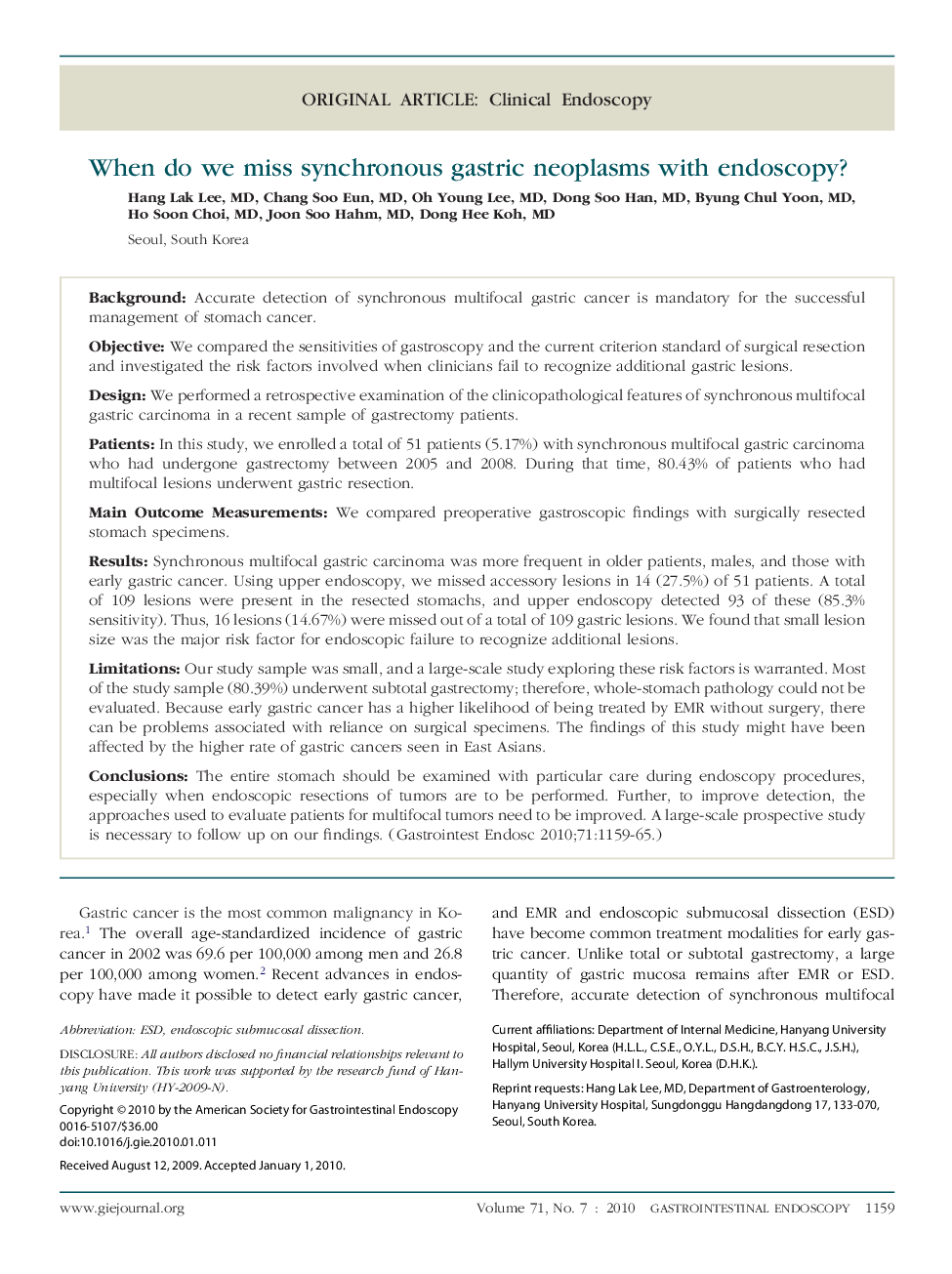| Article ID | Journal | Published Year | Pages | File Type |
|---|---|---|---|---|
| 3303949 | Gastrointestinal Endoscopy | 2010 | 7 Pages |
BackgroundAccurate detection of synchronous multifocal gastric cancer is mandatory for the successful management of stomach cancer.ObjectiveWe compared the sensitivities of gastroscopy and the current criterion standard of surgical resection and investigated the risk factors involved when clinicians fail to recognize additional gastric lesions.DesignWe performed a retrospective examination of the clinicopathological features of synchronous multifocal gastric carcinoma in a recent sample of gastrectomy patients.PatientsIn this study, we enrolled a total of 51 patients (5.17%) with synchronous multifocal gastric carcinoma who had undergone gastrectomy between 2005 and 2008. During that time, 80.43% of patients who had multifocal lesions underwent gastric resection.Main Outcome MeasurementsWe compared preoperative gastroscopic findings with surgically resected stomach specimens.ResultsSynchronous multifocal gastric carcinoma was more frequent in older patients, males, and those with early gastric cancer. Using upper endoscopy, we missed accessory lesions in 14 (27.5%) of 51 patients. A total of 109 lesions were present in the resected stomachs, and upper endoscopy detected 93 of these (85.3% sensitivity). Thus, 16 lesions (14.67%) were missed out of a total of 109 gastric lesions. We found that small lesion size was the major risk factor for endoscopic failure to recognize additional lesions.LimitationsOur study sample was small, and a large-scale study exploring these risk factors is warranted. Most of the study sample (80.39%) underwent subtotal gastrectomy; therefore, whole-stomach pathology could not be evaluated. Because early gastric cancer has a higher likelihood of being treated by EMR without surgery, there can be problems associated with reliance on surgical specimens. The findings of this study might have been affected by the higher rate of gastric cancers seen in East Asians.ConclusionsThe entire stomach should be examined with particular care during endoscopy procedures, especially when endoscopic resections of tumors are to be performed. Further, to improve detection, the approaches used to evaluate patients for multifocal tumors need to be improved. A large-scale prospective study is necessary to follow up on our findings.
